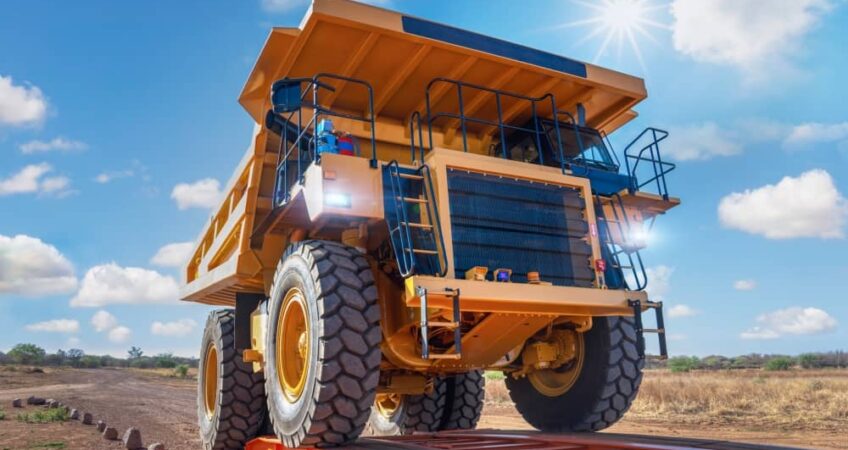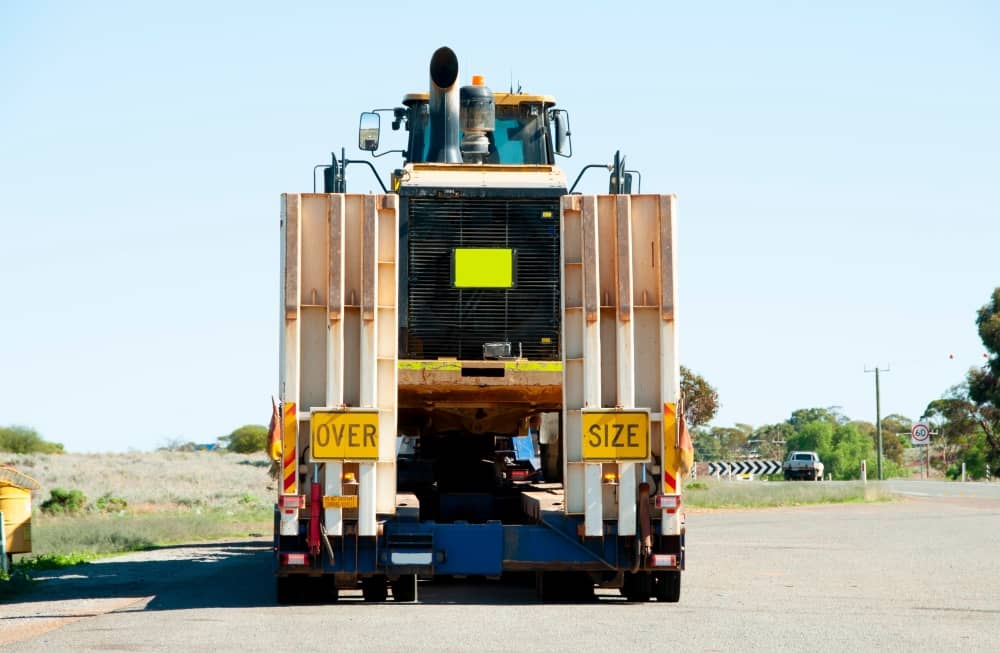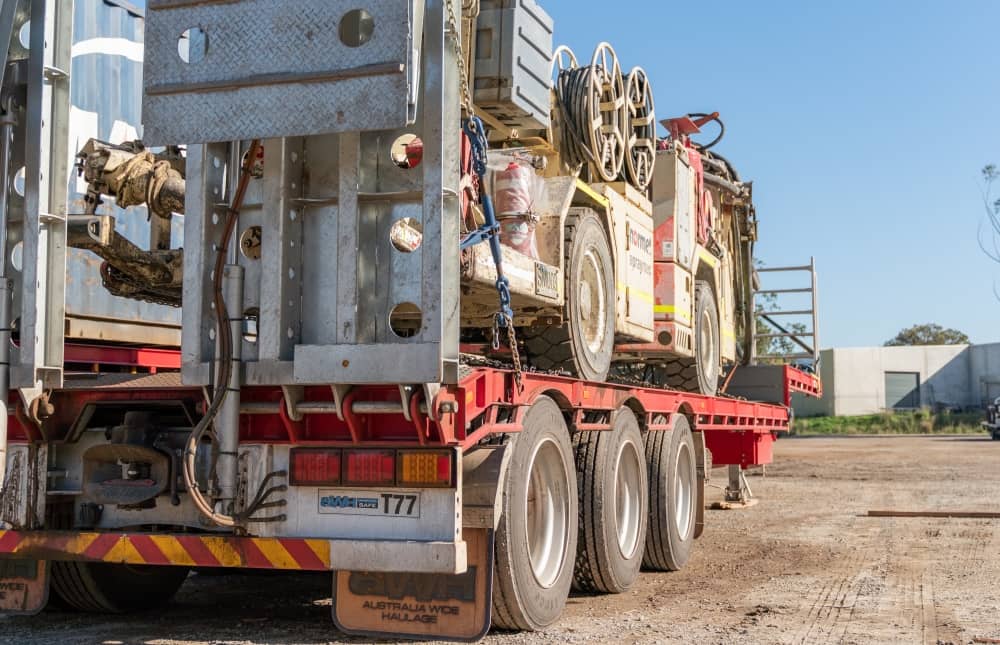
If the loading or unloading process is rushed or ill-prepared when dealing with heavy equipment, the results can be disastrous. Expensive equipment can be damaged or worse yet, crew members can sustain serious injuries.
Clear loading and unloading precautions are crucial for keeping yourself and your team safe.
Here are tips on how to adequately prepare to safely load and unload heavy equipment for haulage.
Tips to Safely Load and Unload Equipment for Heavy Haulage
Safely loading and unloading heavy equipment requires extensive preparation and thorough knowledge.
Our biggest concern at Australia Wide Haulage is the safety of our crew, your crew, and your equipment.
Along with following strict safety precautions and undergoing rigorous training procedures, we also educate our clients on how to prepare for heavy equipment haulage and what to expect when you hire us for heavy haulage.
Here are our expert tips on preparing to safely load and unload heavy equipment.
1. Perform a Detailed Risk Assessment
Risk assessments evaluate and address possible hazards and site-specific risks. For instance, if the unloading is scheduled during a strong storm, an outdoor unloading area may be slippery.
In this case, the scheduled unloading day may need to be changed or additional steps need to be implemented to ensure the safety of both the equipment and anyone present.
Before any loading, transport, or unloading takes place, we strongly recommend conducting a thorough risk assessment. Evaluate every step of the process to ensure you recognise any potential hazards.
If a risk is identified, it must be remediated before loading or unloading commences.
2. Designate a Safe Loading and Unloading Areas
Designate a clear loading and unloading area that is free of obstructions, people, or barriers.
Look for a loading or unloading area that is:
- Fairly flat and level
- Solid enough to handle the weight of the trailer and heavy equipment
- Free of any overhead electric cables
- Clear of debris
- Free of any workers or pedestrians who are not involved in the loading or unloading process
- Free of any vehicles passing through
- Equipped with a safe waiting place for any on-site personnel who are not involved
3. Prepare the Loading or Unloading Zone
Once you pick a loading or unloading zone, make sure the area is clear of any debris and clearly marked.
Try to schedule the loading or unloading away from peak hours when the area will be busiest. Make sure any crew present is wearing the proper personal protective equipment.
Loading and unloading areas, as well as any trailer decks and ramps, need to be clean and dry.
Loading areas should be completely free of any:
- Debris
- Objects
- Snow
- Water
- Ice
- Dirt
- Oil
- Other hazards
The goal is to give the loading equipment as much clearance and traction as possible when moving on or off of the ramp.
4. Designate Responsibilities
Before unloading or loading occurs, discuss responsibilities with any personnel who will be present. Who is in charge of making sure the loading area is clear of any workers? Who is acting as a spotter for the driver and helping to guide them on or off of the trailer?
It is important to have all of these details worked out ahead of time to ensure a safe loading or unloading procedure.
5. Consider Having a Spotter Present
When you hire us for heavy haulage, we recommend having a spotter present to guide the transport driver. This ensures an experienced team member can guide the driver safely to the loading or unloading area.
When transporting heavy equipment, visibility is heavily decreased. Always maintain a safe distance between machinery and a spotter and ensure all crew members are aware of the loading/unloading schedule. During unloading or loading, only designated crew members, such as a spotter, should be present. The fewer people present, the better.
6. Maintain Clear, Effective Communication Throughout
Clear and effective communication is one of the most important elements of a safe transport process.
All crew members should be notified of unloading/loading schedules and what to do when heavy equipment is present.
Before any transport job, we discuss all details ahead of time to ensure you and your crew members know exactly what to expect. We discuss who will be present to act as a spotter, when the hauling equipment will arrive, how long the loading/unloading process will take, and other important details.
Our Safety Precautions at Australia Wide Haulage
There are numerous benefits of hiring a heavy haulage company, with safety being one of the biggest advantages.
With our extensive knowledge and expertise in heavy equipment hauling, we handle the tough work for you.
While we do encourage an on-site member of your team to supervise the loading or unloading process, we do all the hard work.
When you work with us, we operate on the belief that we are responsible for keeping your equipment and team members safe throughout the entire transport process.
Along with the extensive and ongoing training our team members undergo, our trucks are meticulously maintained and equipped with advanced safety mechanisms.
We also understand how to evenly distribute load weight to keep your vehicle stable and safe throughout the transportation process.
If you want to handle the heavy haulage yourself, you can check out our article here: Heavy Equipment and Machinery Transport Guide: Everything You Need to Know
Contact Australia Wide Haulage for Your Heavy Haulage Needs
Our team at Australia Wide Haulage understands the immense risks associated with hauling heavy equipment.
Our top priority is keeping our team, your team, and your equipment safe throughout the entire loading, transportation, and unloading process.
We are committed to providing loading, transport, and unloading services that are as safe and efficient as possible. We conduct thorough risk assessments, provide clear communication, adhere to strict safety protocols, and utilise advanced safety measures to ensure seamless transport.
If you’re planning to transport any heavy equipment, talk with us about safely loading and unloading the machinery for you and delivering it on time and in perfect condition to your specified location. Contact us with any questions or to schedule heavy equipment transport.


